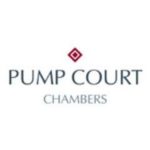Continue reading "Quistclose trusts: A high threshold of facts"
Quistclose trusts: A high threshold of facts

Prickly Bay was engaged in the development of houses and apartments at L’Ance Aux Epines, St George, Grenada. Its principal director was Richard Lee, husband of Rosa Lee. Two adjacent properties were owned by a Mr Steele. Following a dispute between Prickly Bay and Mr Steele a consent order was entered into providing that Prickly Bay would purchase the adjacent properties for US$5m. It was a term of the consent order that Prickly Bay would provide a bank guarantee for US$2.25m. The respondent, BAICO, gave the guarantee.
Mr and Mrs Lee, and Prickly Bay, entered into a loan agreemen...

Continue reading "Quistclose trusts: A high threshold of facts"
A, an Australian winemaker, employed an English company called D&D as its agent and distributor in the UK. D&D bought wines from A in its own right and sold wines on A’s behalf pursuant to an agency and distribution agreement (the agreement). The agreement was terminable by either party on six months’ notice or by notice with immediate effect in a number of events including the appointment of an administrator or liquidator.
On 21 April 2012, D&D went into administration and on 10 July 2012 into creditors’ voluntary liquidation. On administration there were outstanding ...
The case concerned a property investment scheme relating to land at and around an airport known as Fairoaks (the Fairoaks scheme). The Fairoaks scheme was the last in a substantial series of schemes (the Albemarle schemes) which, prior to the Fairoaks scheme, were unregulated collective investment schemes promoted by Egan Lawson (later ECS after its takeover by Erinaceous Group PLC (Erinaceous)) involving investment through a single purpose vehicle (SPV). The underlying subject matter of each scheme consisted of either commercial or development property or a mixture of both. The schemes ...
W and the defendant embarked on a project with the aim of acquiring a substantial interest in an English company, TSE, which started with the acquisition of 125,000 TSE shares in 2002 (the first tranche). In 2003 they attempted to make additional acquisitions of TSE shares, such attempts involving three of W’s companies, including the plaintiff. The overall scheme was that funds would be provided by one company, Assanzon, for the acquisition of shares for another company, Momentum, which were held for its beneficial owners which were principally the plaintiff company, Libertarian. The fu...
The appellant was a property dealer and the respondent was a foreign exchange broker, who had a personal spread-betting account with IG Index. In August 2009, a third party informed the appellant of a deal offered by the respondent that involved a bet on the movement in the value of shares in Royal Bank of Scotland (RBS). The defendant claimed to know people who sat in on meetings between the heads of RBS and officials from the government, and it was expected the Chancellor would make a public statement which would have an effect on the share price of RBS. Following an initial telephone ...

Continue reading "Trusts: In the commercial sphere"
The claimant (Mr Patel) became friends with Mr Georgiou in 2004. Mr Patel was introduced to the defendant (Mr Mirza) at the end of 2008 or the beginning of 2009 by Mr Georgiou, probably at one of the poker games Mr Georgiou hosted every Friday evening.
Mr Mirza was and is employed as a foreign exchange broker and also had a personal spread-betting account.
In August 2009 Mr Patel stated that he was approached by Mr Georgiou with a deal he had been offered by Mr Mirza – Mr Mirza would use his spread-betting account to bet on the movement of RBS shares and that Mr Mirza knew ...

Continue reading "Quistclose Trusts: Clear segregation"
The claimant (Mr Gabriel) and the first defendant (Mr Little) were businessmen and erstwhile friends who had previously collaborated in respect to a project known as Southgate street development in Gloucester. The third defendant (High Tech), the entire share capital of which was owned by Mr Little, was the building contractor. The fourth defendant (BPE), a firm of solicitors engaged by Mr Gabriel, drafted a facility letter recording the terms upon which Mr Gabriel was prepared to make a contribution by way of loan to the cost of the development. In the event, Mr Gabriel was unable to ob...